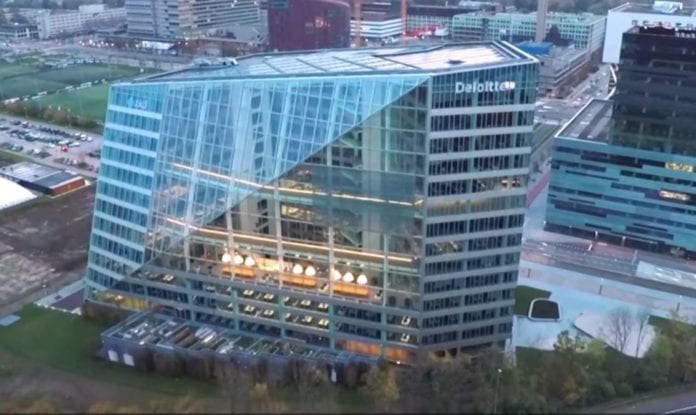World’s most intelligent smart building
Twenty-eight thousand sensors. That is how many it takes to create the world’s smartest, most environmentally friendly building: The Edge. An office building in Amsterdam whose main tenant is consulting firm Deloitte, has been rated the most environmentally sustainable smart building in the world since its 2014 opening.
“When the board asked me to construct this building, I made sure it has everything – like “internet of things,” sensors, sustainability and integrated those into a data analysis platform,” said Eric Ubels, former CIO of Deloitte.
Deloitte is collecting gigabytes of data daily to see how the smart building interacts and adapts with the employees working inside. The consulting company uses its data-filled dashboards to track everything from energy usage to when food needs to be restocked.

The Edge has unparalleled vision into the behavior of its inhabitants and an artificial intelligence-like ability to provide them whatever is needed when it is needed. For instance, The Edge uses a mobile app to track when an employee leaves their house to go to work so when they arrive it can direct them into an open parking spot. It also sees when fewer employees are expected in certain areas of the building so sections can be shut down if deemed not in use, cutting lighting and heating costs. At every location the building will adjust lighting and temperature to an individual’s preference. For example, if someone is more sensitive to bright lighting, The Edge can dim the lights to a predetermined point the moment they enter a new location.
The building’s 6,000 light emitting diode panels, made by Philips specifically for The Edge, operate using an Ethernet-powered lighting system. The panels themselves are filed with sensors – motion, light, temperature, humidity, infrared – to create a digital ceiling. The Philips LoE LED system was used in all office spaces to reduce the energy requirement by around 50% compared to conventional TL-5 lighting.
But The Edge isn’t just a smart project, it is seen as a cultural revolution turning traditionally static work environments on their head. No one who works in the building has an office. The Edge application keeps a schedule for employees, making sure they are in the right place at the right time – in meeting rooms, workstations (as close to a traditional desk as you will find, and all within 7 meters of a window), concentration rooms, etc.

The smartphone is a main link between people and The Edge. Employees can use it to find colleagues, adjust climate controls or manage their gym routine. Those devices can be wirelessly charged on desks, which are all equipped with built-in QI wireless chargers.
Other green practices and solutions in The Edge
Solar panel roof and air ventilation
65,000 square feet of solar panels are located on the facades and roof. The energy from solar panels goes to an aquifer thermal energy storage system with two 130-meter deep bore holes in combination with heat pumps to generate all energy for heating and cooling the building. Excess air from the offices is used again to air-condition the atrium space. The air is then ventilated back out through the top of the atrium where it passes through a heat exchanger to make use of any warmth.
Rain water reuse
Rain water is collected on the roof and used to flush toilets, and irrigate the green terraces in the atrium and other garden areas surrounding the building.
Data
The data generated by the building’s digital systems and the mobile app on everything from energy use to working patterns helps Deloitte understand the working environments as a whole. Discussions are currently ongoing regarding the future of this data and its use for research and knowledge transfer.
The Edge is considered the greenest smart building in the world, according to the U.K.-based Building Research Establishment Environmental Assessment Method, which gave it the highest sustainability score ever awarded at 98.4%. Overall, the building produces 102% of its own energy.

